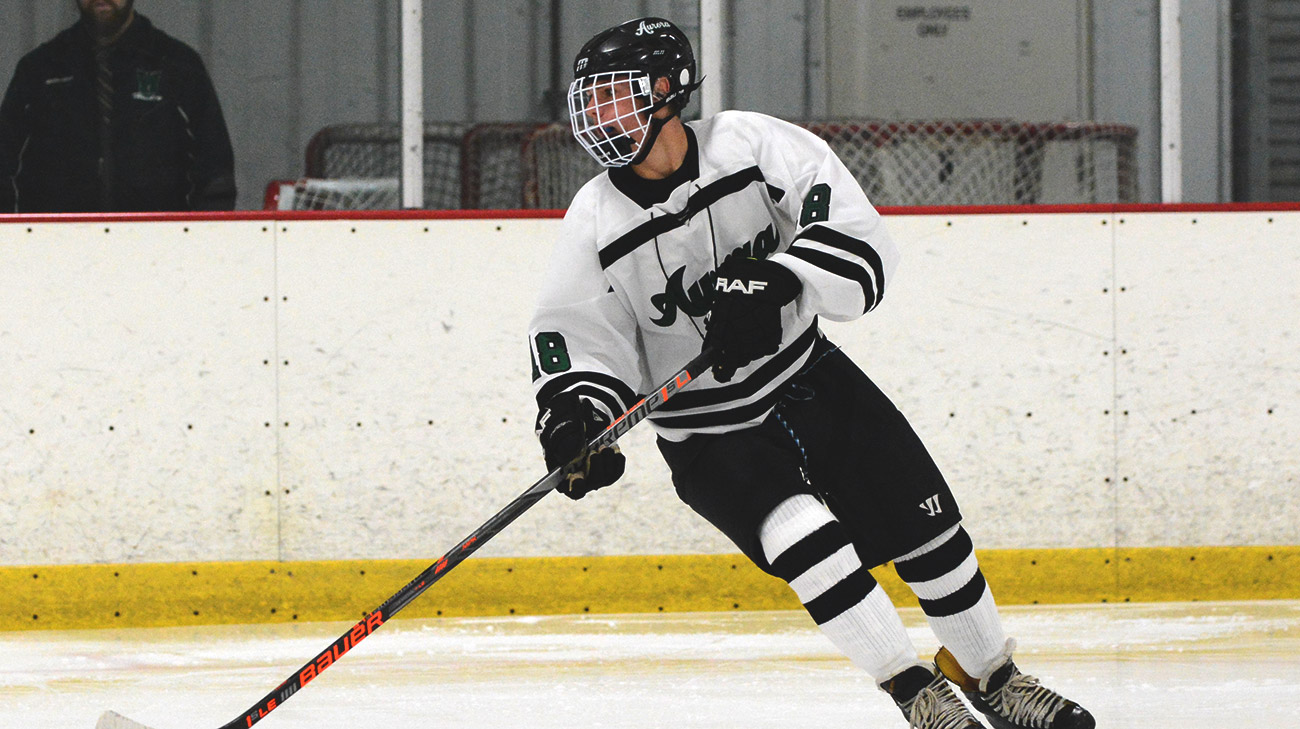Aurora High School sophomore Patrick Murray has played hockey since age 5. In addition to being a defender on his school’s varsity hockey team, he volunteers on Sundays at a local arena to teach kids with disabilities how to skate.
Not much can keep Patrick off the ice — except for a racing heartbeat he experienced during a game in December 2017.
He had felt the palpitations before, during football season, but didn’t think it was a big deal. They’d stop as quickly as they’d start. Even his parents, Dave and Kelly Murray, were more curious than worried about the episodes.
“We just thought it was overexertion,” says Dave.
When the rapid heartbeat occurred during an Aurora hockey game, Patrick mentioned it to his athletic trainer Tom Wymer, AT, MS, of Sports Medicine Center.
“He came off the ice and told me to put my hand on his chest,” says Tom. “I could feel his heartbeat through his pads — maybe more than 200 beats per minute. It definitely wasn’t normal, but it slowed down right away.”
Tom advised Patrick to sit down until the game ended.

“In sports medicine, we take cardiovascular concerns very seriously,” says Tom. “Because Patrick had mentioned that his racing heartbeat had happened multiple times and he’d also get lightheaded, I told the Murrays and the coach that I would not clear Patrick to play again until he saw a cardiologist.”
Thanks to the persistence of Tom and Carly Day, MD, a Cleveland Clinic Sports Health physician, just six days later the Murrays met with Cleveland Clinic Children's pediatric cardiologist Peter Aziz, MD.
“As soon as I saw his electrocardiogram (EKG), I knew Patrick had Wolff-Parkinson-White Syndrome (WPW),” says Dr. Aziz. “WPW is a heart defect that causes abnormal rhythms. Patrick was born with it.”
The Murrays had never heard of WPW, but they were extremely concerned — especially when they learned it could cause sudden cardiac death.
While there were other treatment options, the best treatment and the best way to get Patrick back on the ice quickly was a catheter ablation.
“Dr. Aziz reassured us that everything would be fine and that Patrick would be the same active boy he had always been.”
“Dr. Aziz reassured us that everything would be fine and that Patrick would be the same active boy he had always been,” says Dave.
Two days later, Patrick was in surgery. With the help of tiny wires (catheters) inserted through tiny cuts in Patrick’s groin, Dr. Aziz and his team mapped the electrical activity of Patrick’s heart and studied a 3-D digital model of the heart so they could pinpoint the source of the faulty electrical impulses. Using a catheter with a heated tip, they burned off the damaged heart tissue so it could no longer send impulses.
The whole procedure took about four hours. Patrick went home the same day, capping off one whirlwind week of medical care. The Murrays extended their thanks to Tom, Dr. Aziz and all the Cleveland Clinic caregivers who reacted so quickly to get Patrick the urgent care he needed.
“Patrick is currently not having arrhythmia and no longer has evidence of WPW,” says Dr. Aziz. “We will see him once a year for an EKG, to make sure the accessory tissue doesn’t grow back.”
Just two weeks after surgery, Patrick was back on the ice with his hockey team — and soon learned he was nominated for his athletic conference’s all-star team.
“I feel as good as I ever did, now with a healthy heart,” he says.
Related Institutes: Heart, Vascular & Thoracic Institute (Miller Family), Orthopaedic & Rheumatologic Institute, Cleveland Clinic Children's

